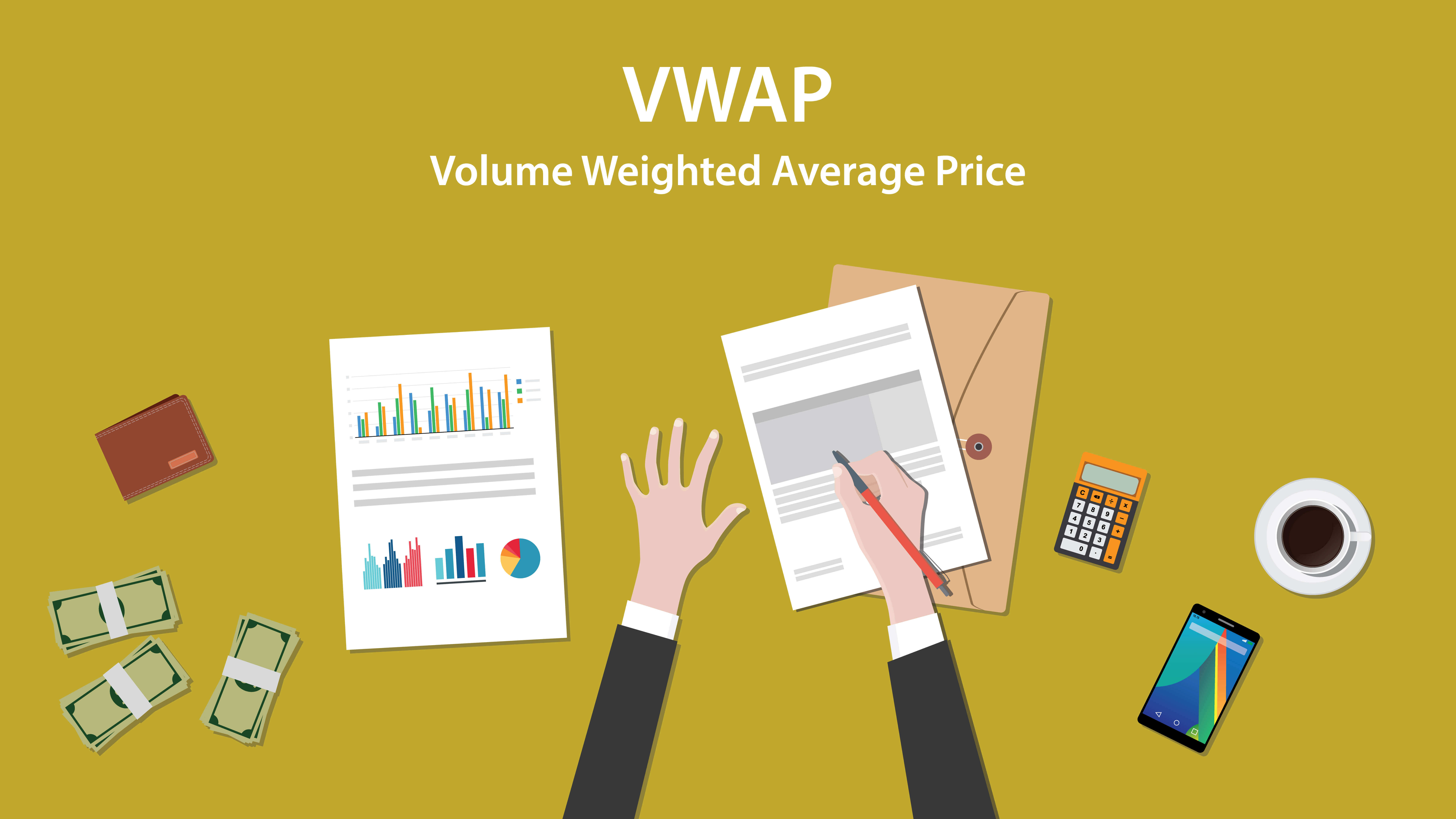Volume weighted average price or VWAP is a widely used benchmark that tells us the average stock price weighted by the total trading volume. Notably, this measure helps investors and analysts evaluate the current price of a stock. Moreover, with the help of VWAP, traders can determine whether it is relatively overpriced or underpriced compared to the average trading price for the day. Additionally, this information is often used to facilitate the entry or exit of a position.
The VWAP is commonly used as a benchmark to define the quality of executions in large orders. For instance, if a portfolio manager wants to buy thousands of shares but also wants to acquire the position below the average price for the day, the VWAP will usually be the price to beat. A trader tasked with acquiring such a large position will be considered successful based on comparing the average purchase price and the VWAP when the position was accumulated.
Understanding Volume Weighted Average Price
VWAP is an intraday price measure that can be used to make serious decisions. It helps investors to decide whether to adopt an active or passive approach to position entries. VWAP can also help make decisions on whether to enter or exit given security. It’s essential to mention that many traders use the VWAP to help them buy at relatively low prices and sell at comparatively higher prices.
Calculating Volume weighted Average Price (VWAP)
VWAP is calculated for each day. It starts when the markets open and ends when the markets close for the day. Therefore, the calculation uses intraday data. The formula for calculating VWAP is as follows:
VWAP = (Cumulative typical price x volume)/cumulative volume
The calculation starts with the Typical Price (TP) price of the first completed bar or candle on the chart, which indicates it is dependent on the time frame of the chart being observed. It is the average of the high price, the low price, and the stock’s close price for that day. Using the formula [(H+L+C)/3], if H = 25, L = 17 and C = 22, the stock’s average price would be:
Typical Price = (25+17+22) / 3 = 21.33
The next step in the VWAP calculation is to multiply the typical price by the volume (V) in the period measured to find the Total Price Volume (TPV). If V = 46,000, then TPV calculates as follows:
TPV = 21.33* 46,000 = 871,180
Remarkably, the VWAP for the first candle ends up being the Typical Price. That’s because the volume component cancels out in the first iteration of the calculation. But, things change for the next candle. The formula then calculates cumulative price and volume in the following procedure for the second candle and similarly for each next candle after that:
[TPV (Candle 1) + TPV (Candle 2]) / [V (Candle 1) + V (Candle 2)]
Imagine the second candle closed with a typical price of 17 and a volume of 42,000. In that case, the price and volume production for the second candle would be 714,000. Moreover, this would add to the TPV for the first candle. The VWAP can be determined by dividing the TPV sum by the cumulative volume of 88,000 (46,000 from Candle 1 and 42,000 from Candle 2). Hence, the VWAP after the second candle would be calculated as follows:
VWAP = 871,180 + 714,000 / 88,000 = 18.01
This indicator is calculated for any period to show the VWAP for every data point in an intraday stock chart. Remarkably, it is done automatically by charting platform algorithms. Therefore, the trader only needs to specify an intraday time frame to see the VWAP calculation results.
Importance of Volume Weighted Average Price
The volume-weighted adjusted price is the average price of the stock. It does not affect its closing price. The VWAP calculation experiences a lag as it comes from historical data. Notably, that is making it better suited for intraday trading. VWAP is a common tool among investors for many reasons:
3 reasons
- It can show if the market is bearish or bullish
The market is bullish when the price is below the VWAP and bearish when the price is above the VWAP. There will be a rise in the buying price during a bullish market, and the trend line on the chart will move upward. Still, there is more pressure to sell the stock during a bearish market, leading to a downward trend on the stock chart.
- You will know when to buy or sell
Traders who use the VWAP as a technical analysis tool will not buy a stock when there is a signal to do so, and they wait for a favorable price. The investor who pays for a stock trading below the VWAP line will not pay more than the stock’s average price.
But, traders who use the VWAP line as an indicator will buy at a low price. Therefore, they are making more profits when they sell the stock. VWAP helps the trader make more educated decisions while buying stocks.
- VWAP is a better tool than the moving average
Moreover, the VWAP is also used by pension plans looking to occupy a larger portion of the market. It enables them to take a different position without disrupting the market too much. Undoubtedly, timing is the most important element with day trading. The VWAP helps traders know the right time to enter or exit the market.
It is also a great indicator when choosing what stocks to buy. However, it provides greater value when used with other trading strategies. That formula can tell you a lot about the current and future state of stock for both long and short positions. VWAP can help investors make more informed trades.











